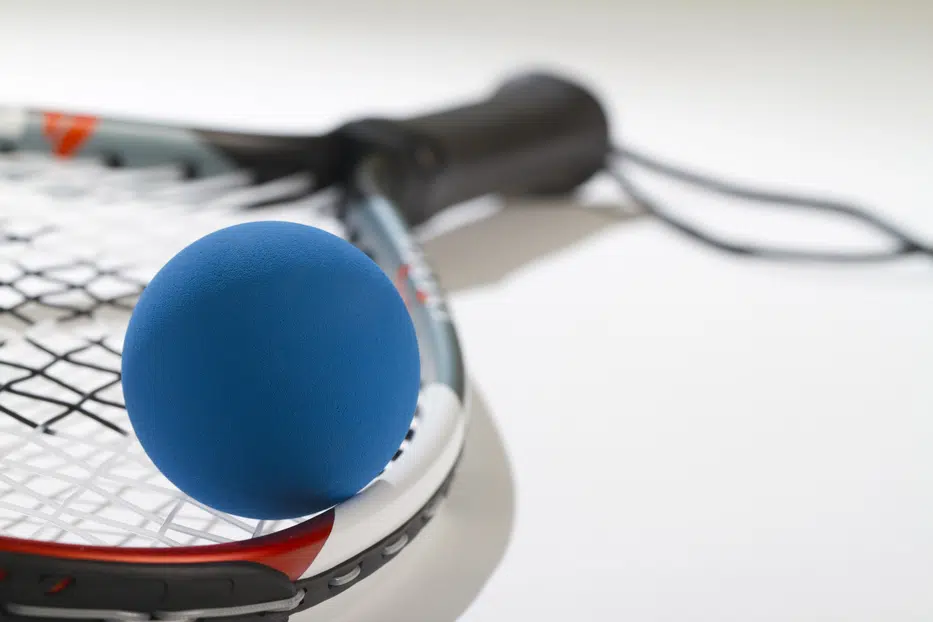While both spherical racket sport balls, tennis balls and racquetballs have distinct qualities in materials, size, weight, bounce, speed potential, cost, and overall construction.
Here are 11 ways tennis balls differ from racquetballs:
- Size – Tennis balls 6.5-6.7cm diameter, racquetballs 5.5cm.
- Weight – Tennis balls 57-59g, racquetballs around 45g.
- Bounce – Tennis balls have a higher fuzzier bounce.
- Materials – Tennis uses felt/rubber, racquetballs a plastic shell.
- History – Tennis balls from 1500s, racquetballs 1960s.
- Speed – Tennis serves hit 160+mph, racquetballs under 150mph.
- Spin – Tennis balls take more spin from racket friction.
- Records – Fastest tennis serve 163.4mph, racquetball serve 175mph.
- Brands – Wilson, Penn lead tennis; Ektelon, Wilson big in racquetball.
- Durability – Tennis balls lose pressure quickly, racquetballs very durable.
- Cost – Pack of 3 tennis balls is $5, racquetballs $2-$3 each.
Below we’ll explore their specialized designs to appreciate how tennis and racquetballs excel at meeting their sports’ unique needs!

Size Difference
Tennis balls have a diameter of around 6.5-6.7 cm when new. Regulation racquetballs measure 5.5 cm across, noticeably smaller.
The compact racquetball dimension aids quick maneuvers in the enclosed court. Tennis balls generate pace despite a larger footprint.
The small racquetball looked lost on the strings initially when I switched from tennis!
Weight Difference
Tennis balls weigh 57-59 grams, giving them a light fluffy feel. Racquetballs have a slightly heavier weight around 45 grams.
This weight contrast contributes to differing pace potential. Light tennis balls maximize racket speed. Racquetballs carry more mass through the air.
Materials Used
Tennis balls have a rubber core surrounded by a fuzzy felt coating that provides grip and active bounce.
Racquetballs use a rigid plastic shell over a hollow rubber bladder. The smooth exterior reduces friction for speedy rallies.
So tennis balls grab for spin, while racquetballs slide for quick exchanges.
Bounce Characteristics
The deformation of tennis ball felt gives a lively, high bounce with forward kick.
Racquetballs have a flatter, harder bounce off the dense walls and floors thanks to the plastic shell.
The tennis ball bounce really kicked up with angle off the racket compared to racquetballs’ straight trajectory.
Here’s a video that shows the explosive power and extreme bounce you bet from a racquetball ball:
History of Both Balls
Tennis balls evolved from wood and leather to pressurized rubber cores with fuzzy felt over centuries of innovation.
Racquetballs originated in the 1950s as an offshoot of squash and handball. The modern ball debuted in the 1970s.
So tennis balls have centuries of evolution, while racquetballs are a newer invention.
Speed Difference
Well-struck tennis serves utilize a flexible racket and light ball to reach 160+ mph speeds at the professional level.
The fastest recorded racquetball serve is around 175 mph. But typical rallies are slower than tennis due to ball mass.
So tennis balls achieve substantially faster maximum service speeds.
Spin Potential
The soft fuzzy nap of a tennis ball grips the racket strings to impart strong topspin and slice.
The slick plastic racquetball doesn’t grip the strings as much, greatly reducing potential spin generation.
So tennis allows for more ball curve and placement variation versus racquetball’s flatter power.
World Records
- Fastest tennis serve: 163.4 mph by John Isner
- Fastest racquetball serve: 175 mph by Kane Waselenchuk
Tennis balls hold the edge for fastest recorded rally shot speed.
Brands and Manufacturers
Wilson, Penn, Dunlop lead tennis ball production.
Ektelon, Wilson, and Penn dominate racquetball manufacturing.
Both sports benefit from major brands advancing ball tech.
Ideal Storage
Tennis balls lose compression quickly. Storing in pressurized cans extends lifespan.
Thanks to durable plastic shells, racquetballs retain bounce for years with simple ambient storage.
So racquetballs are much lower maintenance over time.
Cost Considerations
A can of 3 new tennis balls can cost as low as $2 per ball. They are frequently replaced.
Good racquetballs cost $2-$3 per ball individually at retail. But each lasts much longer than a tennis ball.
So racquetballs have higher upfront cost but longer duration before replacement needed.
In summary, while superficially similar spheres, tennis and racquetballs optimize their specialized designs for their sports’ unique demands – one for controlled speed and spin, the other for durable rallies and rapid reactions. Understanding these nuances provides deeper appreciation of the engineering inside!
